OnePlus 7 vs Xiaomi Mi 9: Where best to spend your £500
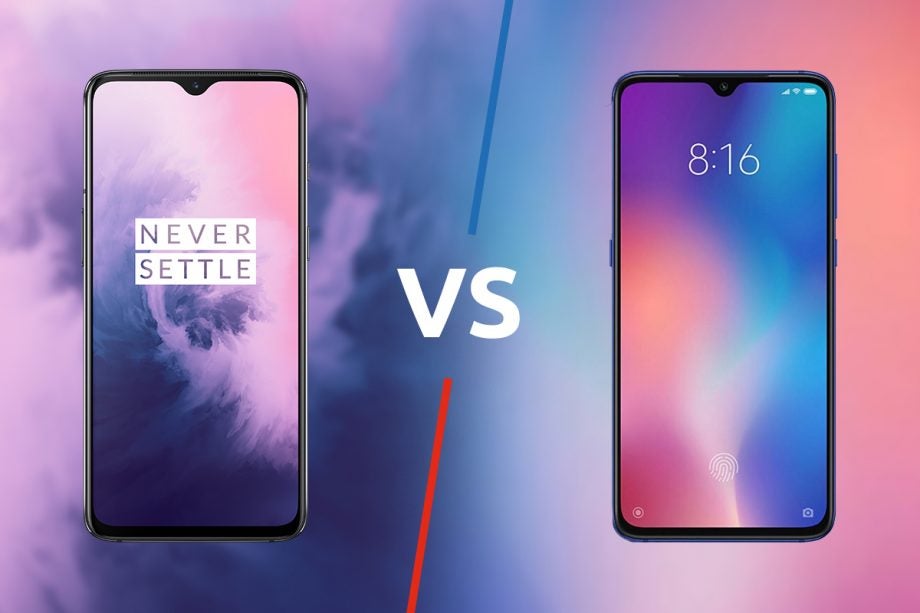
While the price of flagships has steadily crept up over the past few years, not every top-tier phone is dancing around the £1000 mark. Step forward Xiaomi’s latest flagship, the Mi 9, and the new OnePlus 7 – two phones that offer plenty of power for almost half the price.
With both phones starting at a decidedly competitive £499, it’s important to find where the distinctions between the two lie, and just how much you get for your money from each device.
OnePlus 7 vs Xiaomi Mi 9 – Subtle differences in function and form
At first glance, these two phones look markedly similar, especially when viewed head-on. Both are around the same size and weight (although the Xiaomi is technically the thinner, lighter device). Both opt for a dewdrop notch too, however, the OnePlus’ wider interpretation grants it a more elegant appearance.
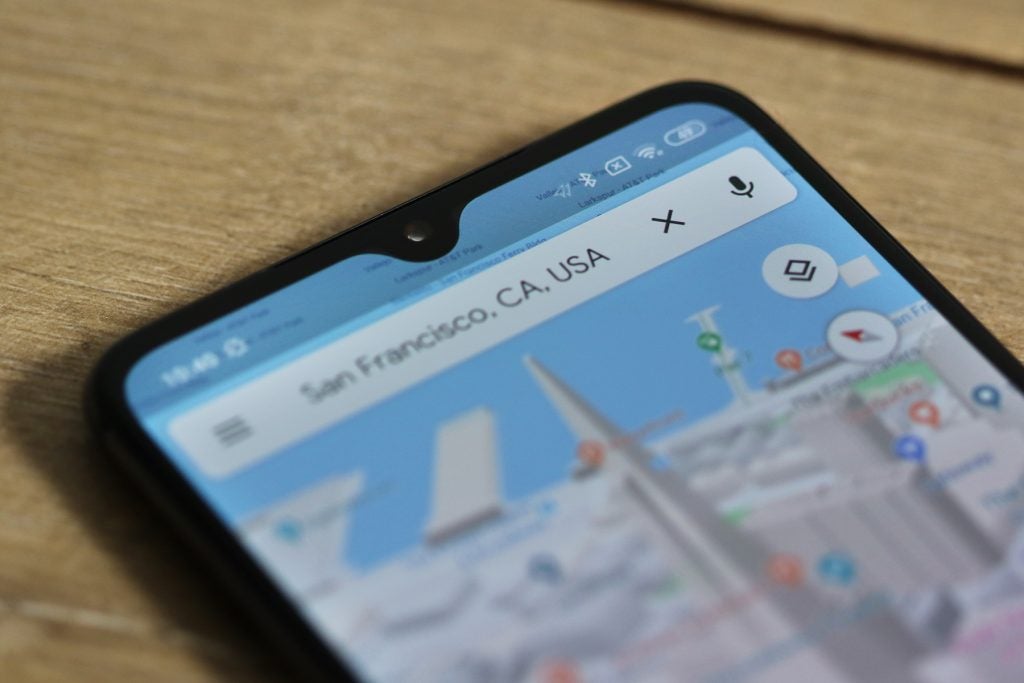
The Mi 9’s notch uses tighter rounding than the OnePlus’
You also get a fairly thin metal frame surrounding a flat glass front and a curved glass back; which on both counts makes for comfortable hand feel, but also readily invites fingerprints (it should be noted that both companies include a case in-box to mitigate this cosmetic conundrum, at least).
The back of the Xiaomi Mi 9 comes in a wider variety of reflective-rainbow finishes, while in most markets the OnePlus 7 can only be had in ‘Mirror Gray’ (there’s a red version, but that’s only available in China and India). Camera placement also sets these two phones apart visually, with the Xiaomi’s module high in the top left corner, while the OnePlus’ sits centrally aligned in the upper third of its back.
Neither phone grants you a headphone jack (although the Xiaomi does come with a 3.5mm adapter in-box) and neither phone is equipped to withstand any more than light rain when it comes to water resistance.
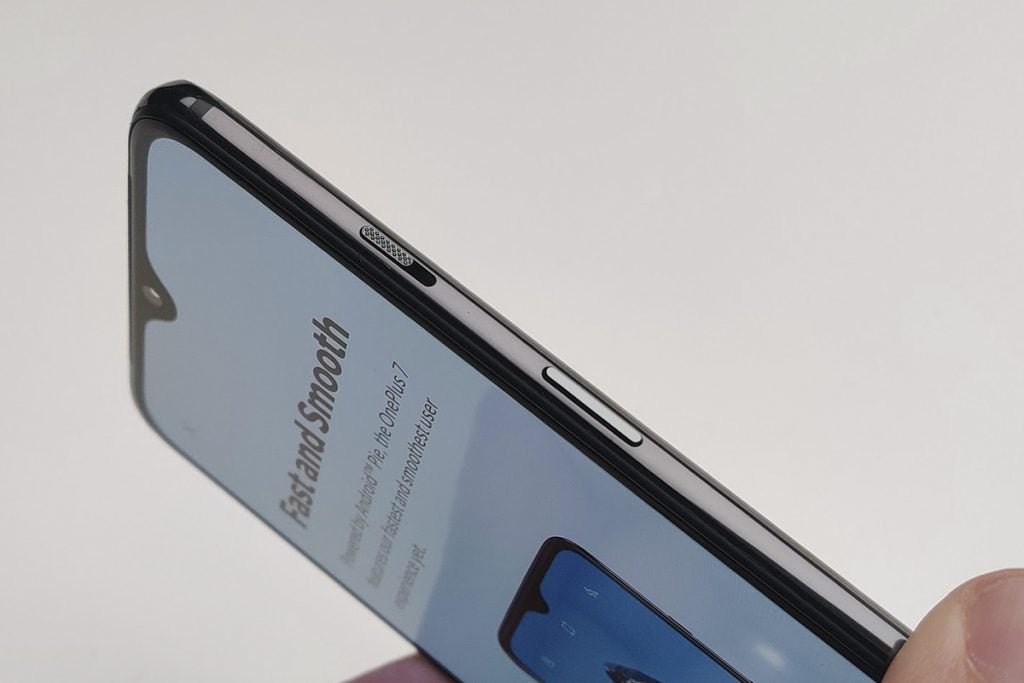
OnePlus’ signature alert slider
In both cases, the fingerprint sensor is hidden beneath the display, using optical technology to read your finger or thumb. Both offer faster and more reliable authentication than their respective predecessors, but the OnePlus’ offering seems to tote greater reliability compared to the sensor on the Xiaomi.
One of OnePlus’ defining hardware features also makes an appearance on the 7 – a physical alert switch letting you jump from ‘Ring’ to ‘Vibrate’ to ‘Silent’ profiles without even having to look at the device. In response, the Xiaomi Mi 9’s party piece is a customisable hardware key that, among other things, can be programmed to summon the Google Assistant.
OnePlus 7 vs Xiaomi Mi 9 – Similar screens, significantly different software
The difference in screen size (6.39-inches versus 6.41-inches on the OnePlus) is negligible, especially when you consider that both phones also adhere to a tall 19.5:9 aspect ratio. As such, it stands to reason that the standout benefits of each phone’s display manifest in other ways.
The challenge here is that both are excellent all-rounders, not to mention, pretty evenly matched. Either way, you benefit from a Full HD+ resolution AMOLED panel with HDR support, some level of gesture support and the aforementioned in-screen fingerprint sensor.
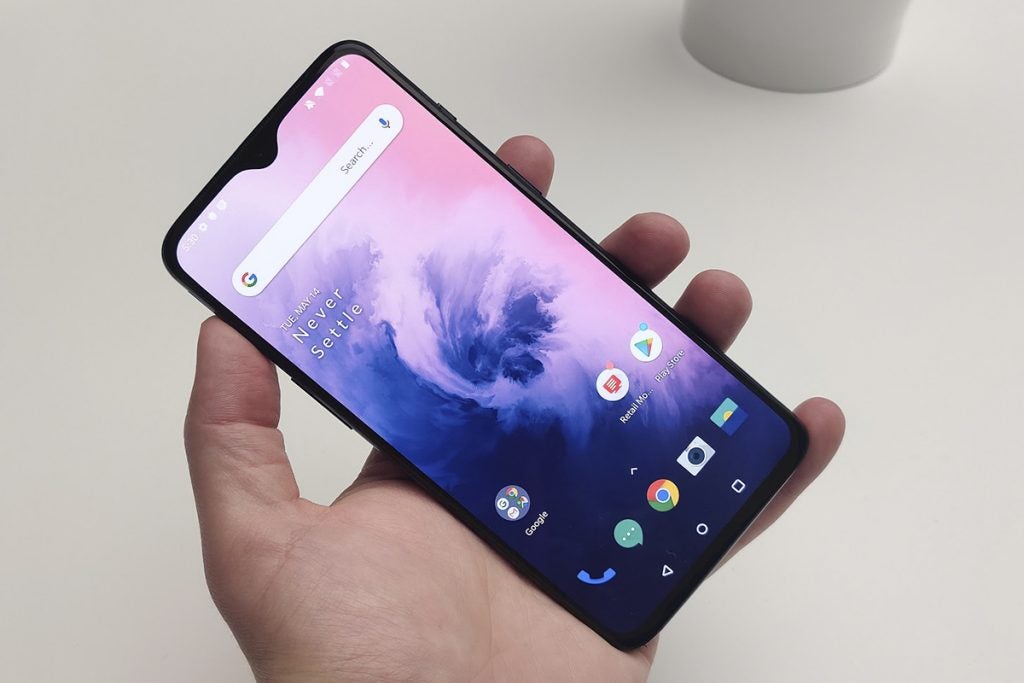
The OnePlus 7
Both also feature a pleasing level of viewing customisation, with the Xiaomi opting for generic display tweaking, while OnePlus has placed a focus on accuracy; offering presets for different standardised colour spaces and additional viewing modes, including a ‘Reading Mode’ which sets everything to greyscale when required.
OnePlus has also ensured that HDR viewing is available on services like Netflix, while the Xiaomi can only use such functionality when watching dedicated files and video on YouTube.
Related: What is HDR?
For phones at this size, one-handed use is a tricky affair. OnePlus gets around this by having simple gestures to get at hard-to-reach elements, like letting the user swipe down from anywhere on the home screen to access the notifications tab, while the Xiaomi boasts a fully-fledged one-handed mode that shrinks the whole interface down with a simple gesture.
While OnePlus’ efforts help to a point, Xiaomi’s implementation guarantees that no matter what on-screen element you’re trying to get at, you can pull it within easy reach without too much effort.
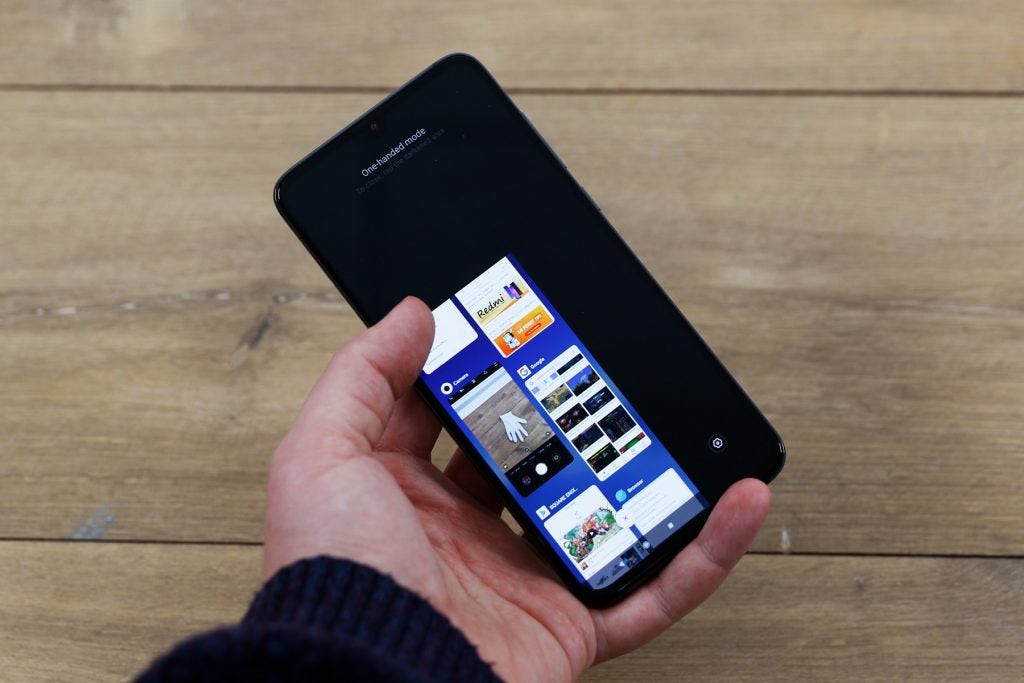
One-handed mode is invaluable when working with the Mi 9’s large display
Despite strides to more readily appeal to Western tastes, Xiaomi’s overall user experience on the Mi 9, MIUI 10, still feels pretty heavy-handed. In contrast to stock Android, and to a certain degree OnePlus Oxygen OS, the look and feel of the user experience on the Xiaomi is notably different.
To a point, whether you like or dislike the aesthetics of the Xiaomi Mi 9’s UI falls to personal preference but putting it side by side with the OnePlus 7, it’s easy to see how much more cluttered things look and feel.
Oxygen OS takes the base Android experience and builds on its feature set based on user feedback, with smart gesture implementation, customisation options that don’t overwhelm the user and features that stay ahead of the curve. This includes things like a dedicated true dark mode, ahead of Android Q‘s forthcoming integrated implementation.
OnePlus 7 vs Xiaomi Mi 9 – The price of power
Both phones rely on the latest Qualcomm Snapdragon 855 processor and boast at least 6GB of RAM, ensuring a stable foundation for using the latest apps, playing the latest games and committing to other intensive actions, like multitasking.
While there’s no expandable storage to speak of, both start with a respectable amount of internal space. The Xiaomi Mi 9 starts at 64GB and for an extra £150 you can up that to a generous 128GB, however, the OnePlus 7 base model starts with 128GB for the same £499 starting price.
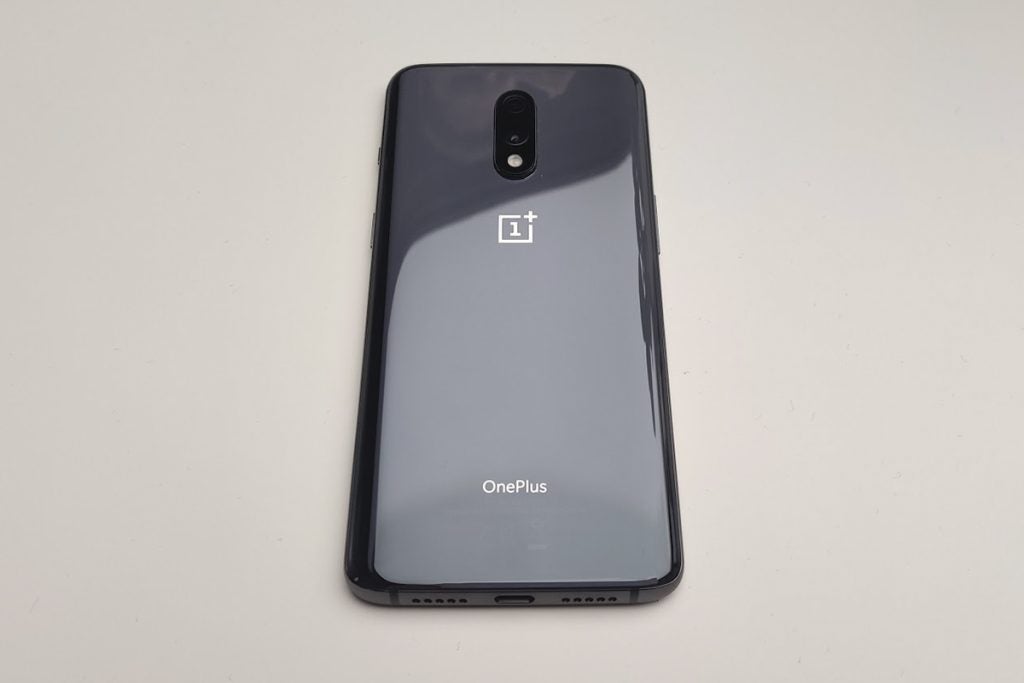
The OnePlus boasts more storage and RAM for your money
Not only does OnePlus’ pricier £549 SKU raise internal storage capacity to a whopping 256GB but you also get 8GB of RAM instead of 6GB, as on the Xiaomi.
As for performance, both phones benchmark very well, which isn’t surprising considering that they’re both using the same class-leading silicon. That said, the OnePlus pips Xiaomi to the post across every major benchmark we test – covering both general performance and graphical/gaming capabilities.
The OnePlus may be physically bigger but that’s not without reason. It also boasts a larger 3700mAh battery compared to the Xiaomi’s 3300mAh cell, while its included Fast Charger also refills the power pack at a rate of 20W, up from the Xiaomi’s 18W in-box adapter.
Related: What is fast charging?
OnePlus 7 vs Xiaomi Mi 9 – Depth or versatility?
One of the biggest talking points of the Xiaomi Mi 9 has to be its rear triple camera setup. Both it and the OnePlus 7’s arrangement centre around the same 48-megapixel Sony IMX586 sensor, but while the OnePlus also makes use of a secondary 5-megapixel depth sensor, the Xiaomi more closely competes with the OnePlus 7 Pro.
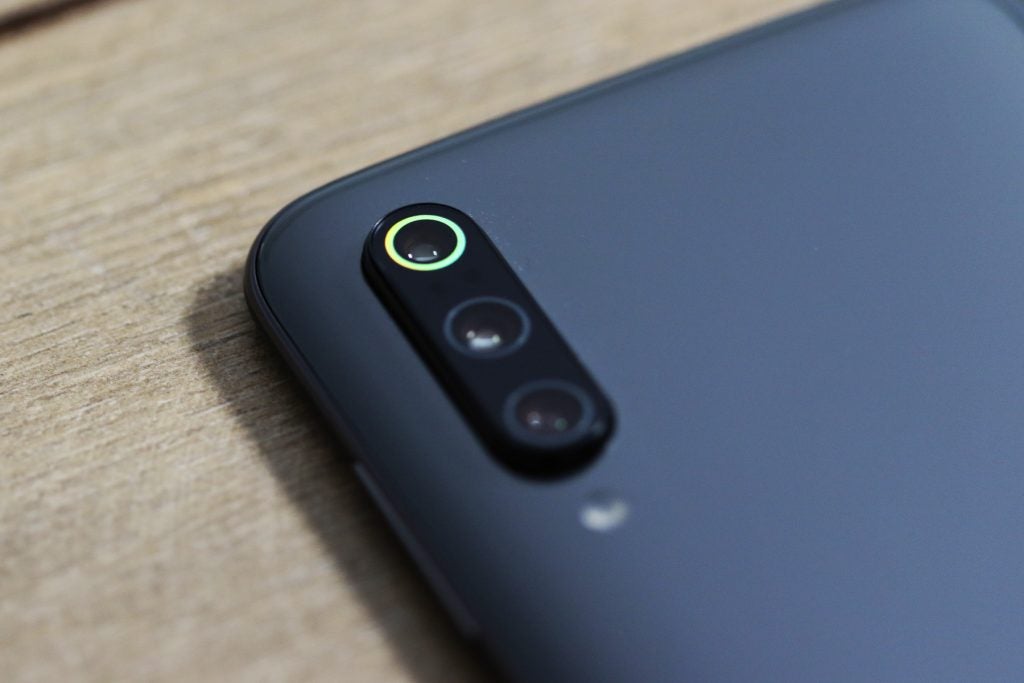
The Xiaomi Mi 9’s camera is a formidable affordable setup
That 48-megapixel main sensor is accompanied by a 12-megapixel telephoto sensor and 16-megapixel ultrawide-angle sensor, making for a far more versatile camera setup. The addition of lossless zoom and the broader perspective through having three different lenses to play with, compared to just the one on the OnePlus, is invaluable if you enjoy snapping pictures on the regular and don’t want to carry a full camera and lens kit around with you.
What’s more, despite a plethora of other devices also using this same 48-megapixel sensor, Xiaomi is one of the few to nail its image processing across the board. Initially, the OnePlus 7’s camera just didn’t deliver in the same way and it’s had to play catch up to really compete with its flagship brethren, including the Xiaomi Mi 9.
OnePlus 7 vs Xiaomi Mi 9 – Verdict
Whichever way you slice it, you’re getting a great smartphone. Both devices offer enough clout to compete with flagships that are twice the price, so deciding which is the better between the two hinges on what you hold in higher regard.
The Xiaomi Mi 9’s triple camera arrangement is better out the box and will always offer greater versatility compared to the OnePlus 7’s dual setup. Its wireless charging is also a nice addition, especially when you consider that it’s the thinner of the two phones.
However, the OnePlus 7 wins out when it comes to battery life, raw performance and software. You get more memory and storage for your money and it’s hard to find fault with the company’s excellent Oxygen OS user experience, not to mention the long-term support that the company has already proven its commitment to.


